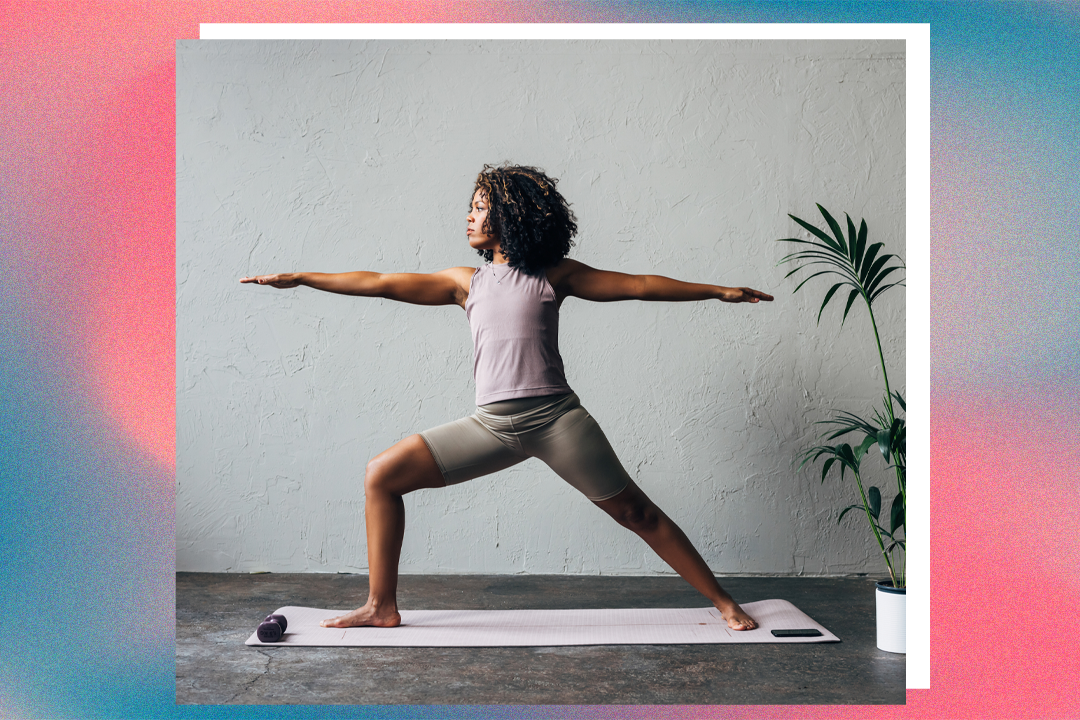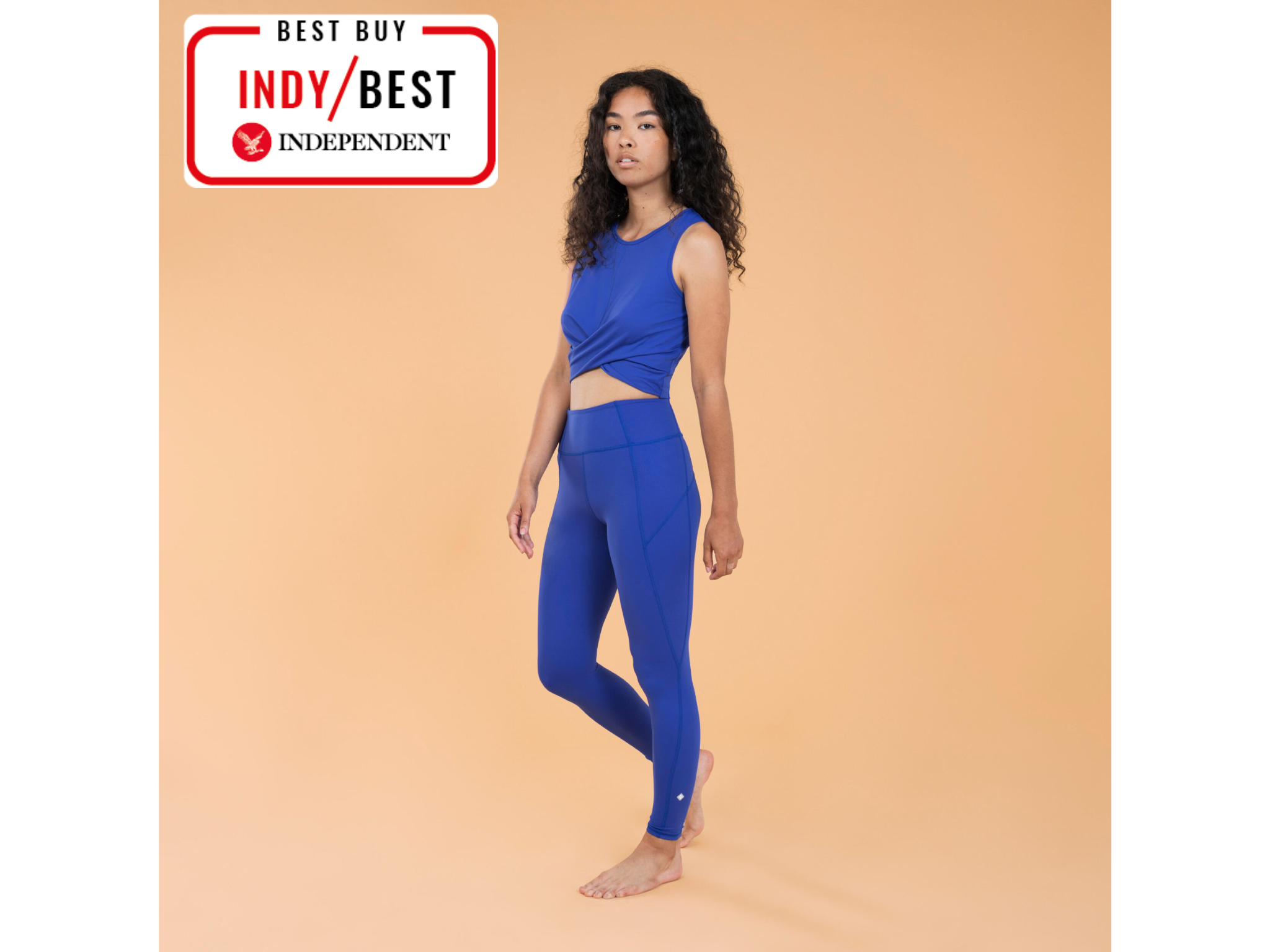The benefits of yoga for the body and mind, according to experts
The discipline was developed as a philosophical and spiritual practice in ancient India

Your support helps us to tell the story
From reproductive rights to climate change to Big Tech, The Independent is on the ground when the story is developing. Whether it's investigating the financials of Elon Musk's pro-Trump PAC or producing our latest documentary, 'The A Word', which shines a light on the American women fighting for reproductive rights, we know how important it is to parse out the facts from the messaging.
At such a critical moment in US history, we need reporters on the ground. Your donation allows us to keep sending journalists to speak to both sides of the story.
The Independent is trusted by Americans across the entire political spectrum. And unlike many other quality news outlets, we choose not to lock Americans out of our reporting and analysis with paywalls. We believe quality journalism should be available to everyone, paid for by those who can afford it.
Your support makes all the difference.An ancient practice rooted in Indian philosophy, yoga dates back more than 5,000 years. Helping boost flexibility and reduce stress, among many other benefits, it’s no surprise that the popularity of yoga has only grown in the centuries since.
Our modern understanding of the practice can be traced back to Patanjali’s definitive guide: the Yoga Sutras. Written more than 2,000 years ago, the texts form the foundation of yoga. According to the doctrine, the true meaning of the discipline is the union of the body, mind, soul and spirit.
But it wasn’t until the late 19th century that yoga became more well-known in the West, as travellers to India spread word home of the spiritual discipline. Now, yoga is as ubiquitous as sports with it being practised around the world in studios, gyms and even at home, thanks to YouTube tutorials.
A vehicle for meditation and mindfulness, yoga has grown further in popularity thanks to the boom of the wellness industry. As well as boosting your overall physical health, yoga has been shown to improve mental well-being, whether it’s creating a sense of calm or sharpening concentration.
Whether you’re looking to widen your understanding of the discipline or want to practice for the first time, here’s your cheat sheet for starting yoga – from the benefits to the kit and equipment you need to get started.
What are the benefits of yoga?
Charlotte Townend, private yoga teacher and founder of Wylder, tells us that the practice “will build endurance that will in turn strengthen all areas of the body for other areas of fitness”. She adds that balancing poses in yoga causes the small minor muscles in the joints to strengthen, thereby decreasing the chance of injury. “Inversions (poses where the heart is higher than the body e.g. shoulder stand, legs up the wall, downward dog) also have wonderful benefits for the body. Not only will they calm the nervous system, they will improve lymphatic drainage, improve blood circulation and increase blood flow to the skin on your face,” Townend explains.
Cat Meffan, founder of the Soul Sanctuary, agrees, adding: “Though we tend to first categorise yoga as a physical activity and one that will make us strong and flexible, there is so much more to this practice than meets the eye.”
From a physical standpoint, yoga can energise you, soothe your nervous system, and stretch out all those muscular kinks in the body after a long day to boost your overall strength. It can also help with back pain relief, arthritis symptoms and heart health, as well as a sounder sleep and more energy throughout the day. Because of this, Meffan says that yoga “has the power to truly transform you, from the inside out”.
Read more: Best yoga pants and leggings to support you as you stretch
“Yoga teaches us to slow down and to create space in our busy lives,” she states. The discipline can also help alleviate anxiety through the power of pranayama (breath) and meditation. Helping her heal from an eating disorder and bout of depression, yoga boosted Meffan’s confidence and helped her to embrace her imperfections. “Yoga gives me the space to be raw and vulnerable without shame or judgment and I know through my years of teaching that it does the same for so many others,” she told us.
Similarly, Towend says yoga’s breathing exercises, such as the box breath (which involves inhaling for four, holding for four, exhaling for four, and repeating) will “calm the mind and bring awareness of the present moment”.
Is yoga good for weight loss?
Strenuous yoga sessions can help burn calories while toning and increasing your muscle mass. Beyond the physical benefits, yoga can also manage stress, increase concentration levels and improve your mood, which can have an impact on your diet and eating habits.
What are the differences between Pilates and yoga?
While both pilates and yoga are low-impact exercises, they are more different than you might think. The main one is that yoga is an ancient holistic discipline that encourages the fusing of the mind, body and spirit, Meanwhile, pilates was developed by a German-American gymnast in the mid-19th century to build core strength and muscular balance.
But there are some similarities, with both disciplines teaching breathing techniques and helping to combat stress and anxiety while building flexibility.
How to get started with yoga
“Yoga is for everyone,” Townend says. “And you do not need to be flexible in order to start. To begin with, I recommend an hour at a time, once or twice a week in addition to other forms of movement.”
Townend suggests that in-person classes are more beneficial so that teachers can help with alignment and offer modifications, but YouTube is also a great source to start with ease at home. “Start with the basics and slowly build on the practice. With consistency and patience, the body will begin to open up and ease into new poses and transitions,” she tells us.
What equipment do I need for yoga?
To get started with yoga, there are a few bits of essential equipment you need – including a high-quality yoga mat that’s non-slippery and cushioned like the Dare 2 B fitness yoga mat (£30, Dare2b.com) from our review, yoga blocks for adjusting poses and improving balance and yoga straps to help with stretching poses.
As you advance in the discipline, you might want to invest in foam rollers for additional support in more tricky poses and sandbags for adding weight and resistance when stretching. Townsend also suggests a facial oil like Wildsmith’s active super oil (£105, Wildsmithskin.com) to help with relaxing during poses like savasana.
What kit do I need for yoga?
Yoga is all about feeling zen and calm, but this is impossible when wearing the wrong bit of kit. Leggings need to be soft and flexible, so they can move with your flow without restriction. In our tried and tested round-up, Decathlon’s Kimjaly premium yoga leggings (£39.99, Decathlon.co.uk) took the top spot while Asos’s 4505 icon high-waist yoga leggings (£15.30, Asos.com) were a great budget alternative.

When it comes to choosing a top, look for something slim-fitting and lightweight. Anything more loose-fitting may fall over your head or bunch up when you’re in poses. Many people like to wear tank tops rather than T-shirts or tops with long sleeves, as they allow you to move more freely.
Some might opt for a sports bra for extra support. In our review, Maaree’s solidarity high-impact sports bra (£68, Maaree.com) came out on top thanks to “the high quality and amount of thought and work that’s gone into it”.
Voucher codes
For the latest offers on sports and fitness gear, try the links below:
Get kitted out with our round-up of the best yoga leggings for 2024